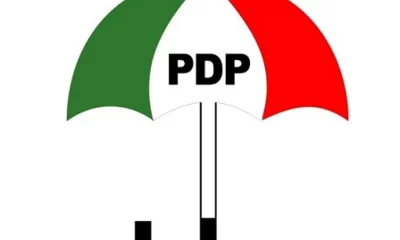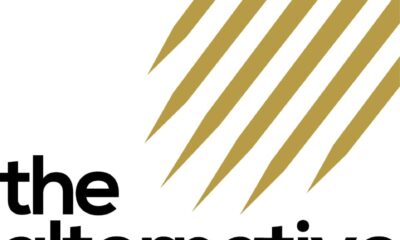Top Stories
Biggest banks to infuse First Republic with $30 billion to stabilize troubled lender
Biggest banks to infuse First Republic with $30 billion to stabilize troubled lender
The biggest U.S. banks are banding together to rescue beleaguered San Francisco lender First Republic (FRC) with $30 billion of uninsured deposits, an unusual joint effort to stabilize a rival and restore calm following a volatile week.
The infusion from 11 of the nation’s biggest banks, including JPMorgan Chase (JPM) and Bank of America (BAC), follows a steep drop in the shares of First Republic, which was the nation’s 14th-largest bank as of Dec. 31 with $212 billion in assets.
JPMorgan, Bank of America, Citigroup (C) and Wells Fargo (WFC)—the four largest lenders in the U.S. by assets—deposited $5 billion apiece. Goldman Sachs (GS), Morgan Stanley (MS) each deposited $2.5 billion while U.S. Bancorp (USB), Truist (TFC), PNC (PNC), State Street (STT) and Bank of New York Mellon (BK) each deposited $1 billion. The deposits have to stay at First Republic for 120 days and earn interest at the same rate of current depositors, according to a person familiar with the pact.
“The actions of America’s largest banks reflect their confidence in the country’s banking system,” the banks said in a joint release. “Together, we are deploying our financial strength and liquidity into the larger system, where it is needed the most.” Federal Reserve Chair Jerome Powell, Treasury Secretary Janet Yellen and two other regulators said in a joint statement that “this show of support by a group of large banks is most welcome, and demonstrates the resilience of the banking system.”
The extraordinary infusion from First Republic’s competitors is an attempt to stop a slide for the California lender that began during last week’s failure of another lender in the same state: Santa Clara-based Silicon Valley Bank. An initial infusion of $70 billion in financing from JPMorgan and the Federal Reserve announced Sunday failed to alleviate the pressure.
First Republic’s shares plummeted again this week after S&P Global and Fitch Ratings downgraded the bank’s credit rating. Shares recovered Thursday after The Wall Street Journal and Bloomberg reported details of the industry pact, with the stock up 10% at the close. CNBC also earlier reported the 120-day term of the deposits provided by the 11 banks.
Deposit withdrawals, which helped sink Silicon Valley Bank, are a potential problem for First Republic, according to S&P. “We believe the risk of deposit outflows is elevated at First Republic Bank despite the actions of federal banking regulators and the bank actively increasing its borrowing availability to mitigate risk associated with the bank failures over the last week,” it said in its downgrade note.
Of the bank’s $176.4 billion in deposits as Dec. 31, approximately 68% were above the insurance levels backstopped by Federal Deposit Insurance Corporation. Last week the FDIC agreed to cover all uninsured depositors at Silicon Valley Bank and New York lender Signature Bank after deciding that the failure of those two institutions constituted “systemic risk.”
Some of the companies involved in the attempted First Republic rescue played the role of saviors during the last banking crisis in 2008. JPMorgan snapped up New York investment bank Bear Stearns and Seattle thrift Washington Mutual, turning itself into the country’s largest coast-to-coast bank. Charlotte-based Bank of America purchased New York investment bank Merrill Lynch, which gave BofA more sway on Wall Street. San Francisco lender Wells Fargo picked up Wachovia, providing it with a bigger presence in the South.
These banking giants hope their new, coordinated move will stabilize confidence in the banking system. It may be more difficult for some to play the same rescuer role on their own this time around.
First, it is more difficult for the biggest of that group to make purchases of rival banks after gobbling up so much market share following the 2008 crisis. Banking laws prohibit any bank from pushing its share of all U.S. deposits over 10%.
Some may also be less willing to repeat the headaches of 2008. JPMorgan CEO Jamie Dimon, for example, has said he would not purchase Bear Stearns again if he had the chance due to the legal problems it created for his company in the aftermath of the crisis.
Over the last week, as regional banks faltered, some of these giants sucked in large amounts of deposits as customers sought the perceived safety of larger institutions. The banks in their joint release Thursday said “there were outflows of uninsured deposits at a small number of banks” following the failures of Silicon Valley Bank and Signature Bank. Their action “reflects their confidence in First Republic and in banks of all sizes,” adding that “regional, midsize and small banks are critical to the health and functioning of our financial system.”
First Republic was founded in 1985 by Jim Herbert, and over the decades it attracted wealthy customers and businesses clustered on either coast. Of the bank’s total deposits, 40% came from the San Francisco Bay area, 19% from New York, 9% from Boston and 8% from Los Angeles, according to the bank’s annual report.
Amid the tumult of the past week the bank has said its capital and liquidity levels were strong. Herbert and the bank’s CEO said in a release Sunday that “we operate with an emphasis on safety and stability at all times, while maintaining a well-diversified deposit base.”


 Top Stories13 hours ago
Top Stories13 hours agoTinubu Deliberately Put Northerners In Key Places – Ribadu

 News12 hours ago
News12 hours agoBlack Market Dollar (USD) To Naira (NGN) Exchange Rate Today 19th April 2024

 Entertainment1 hour ago
Entertainment1 hour agoGuinness World Record: Davido, Sowore Turn Up To Support Chess Master, Onakoya

 Politics13 hours ago
Politics13 hours agoIsraeli Missiles Hit Iran, Iraq And Syria

 Top Stories1 hour ago
Top Stories1 hour agoCourt Discharges, Acquits Ex-AGF Adoke Of Money Laundering

 Entertainment13 hours ago
Entertainment13 hours agoNollywood Eniola Ajao’s movie ‘Ajakaju’ rakes over N200 million in cinemas

 Top Stories13 hours ago
Top Stories13 hours agoResolutions of PDP NEC meeting emerges [FULL TEXT]

 News2 hours ago
News2 hours agoAltBank Walks Against Hunger, Advocates for Education





